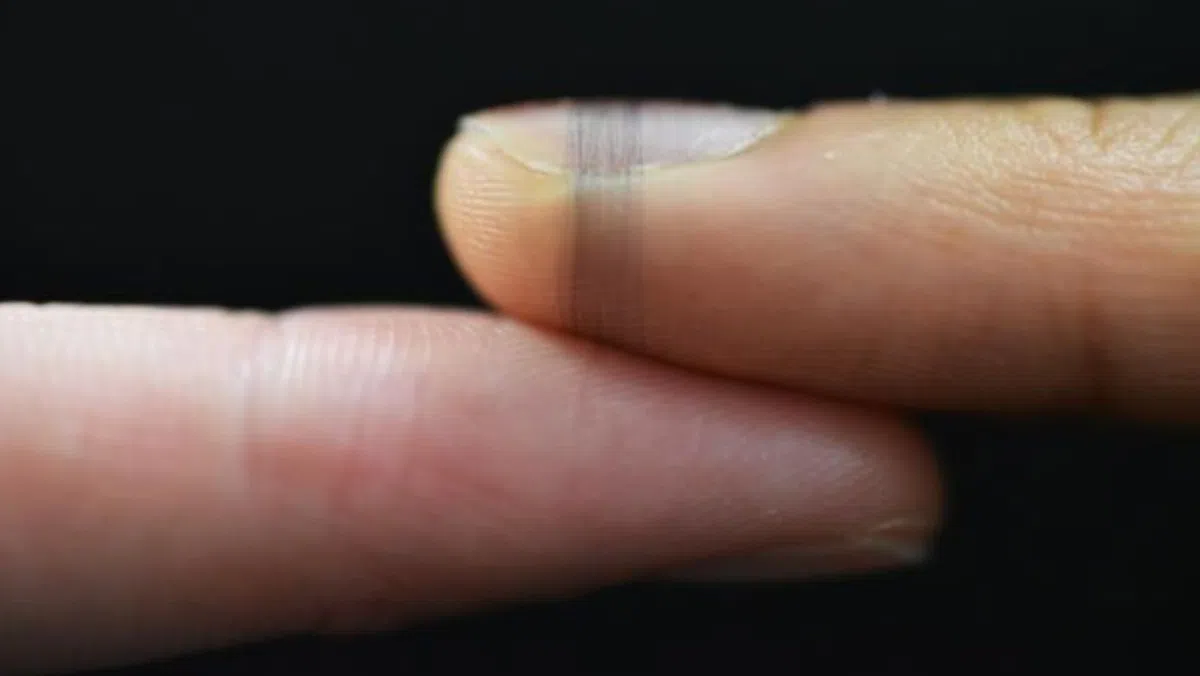
Scientists can imprint sensors on you that you can’t feel
They are 50 times thinner than a human hair, making them ideal for use on the skin: invisible sensors. Scientists were able to print it directly on the skin.
These sensors are thread-shaped, and the inspiration for making them was spider silk. It is thin, environmentally friendly and transparent. Scientists print them on all kinds of natural materials such as human skin, but also on flower petals. It is a breakthrough in the field of bioelectronics. Because these ultra-thin sensors don’t block sweat pores, for example. This keeps your skin behaving like it’s used to. Since it’s so light, you won’t even notice you’re wearing it.
Conductive polymer
Bio-based spider silk is manufactured using PEDOT:PSS, a conductive polymer, combined with hyaluronic acid and polyethylene oxide. The fibers can be spun completely as desired, and are also adapted to their carrier. You don’t realize you’re wearing it, and even your fingerprint remains intact after it’s imprinted on you. It’s sustainable, and produces little waste, and that makes it a success according to Yanyan-Cherry Huang, the Cambridge professor who led the research (via Nature Electronics).
What exactly you can do with this kind of invisible technology is use it in medical applications, but also in augmented reality and gaming. For example, you no longer need to wear a smart watch to know your health status. The “spider web” ensures that you are constantly being monitored. In gaming, these types of sensors can make the gaming or virtual reality experience more realistic. Since it can also be applied to plants, it may also help farmers track the vitality of their crops.
Electronics you don’t know you’re wearing
Currently, flexible electronics are often manufactured using all types of plastic, which provides a tactile layer on the skin. They also hinder the skin’s natural sensations. Electronic spider web researchers still have many plans for their invention. In the future, they want to add power conversion functions and calculation options to make it even smarter.
Read more about science.

“Travel enthusiast. Alcohol lover. Friendly entrepreneur. Coffeeaholic. Award-winning writer.”
